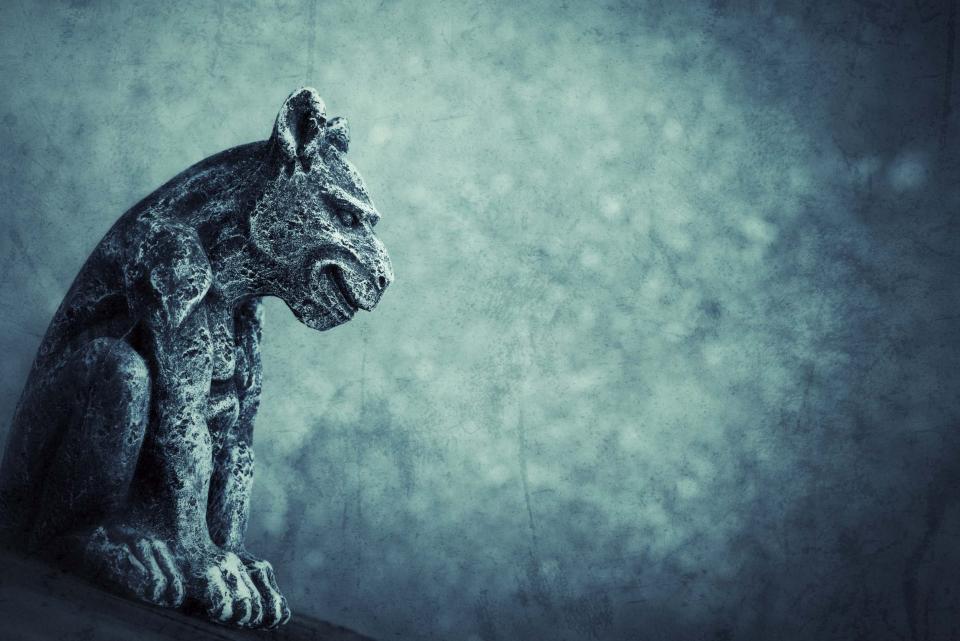


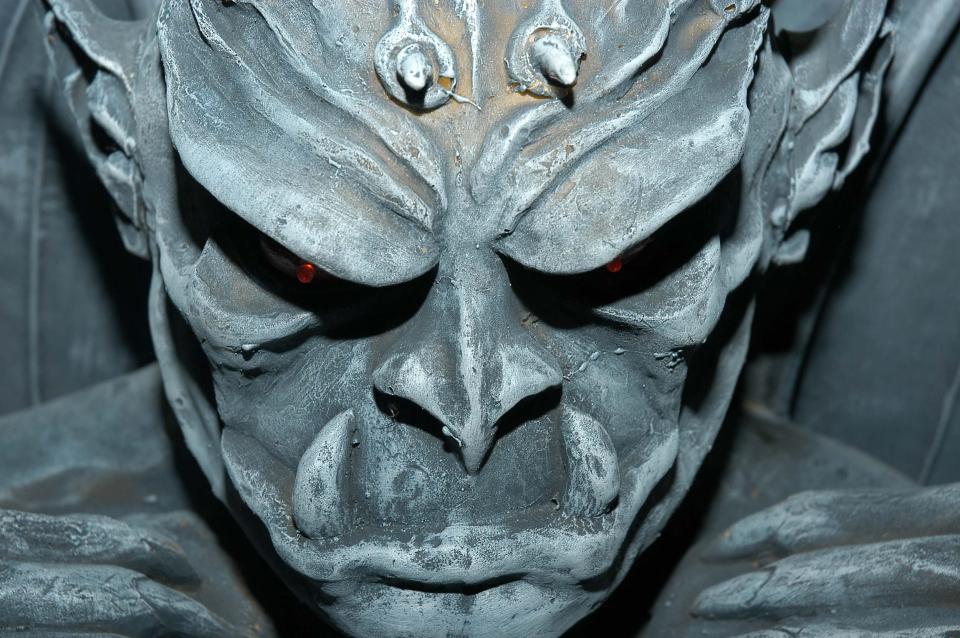
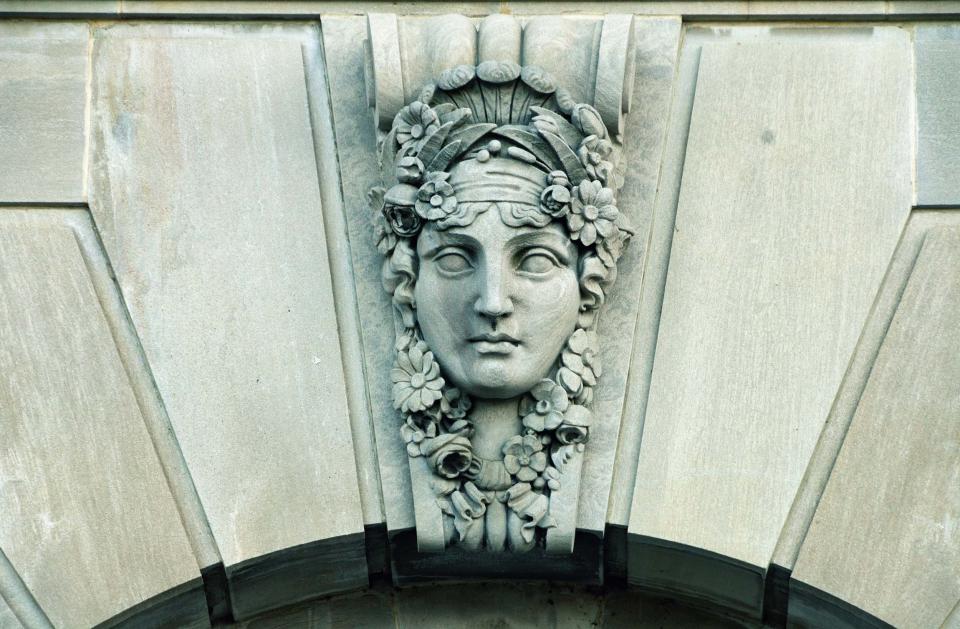
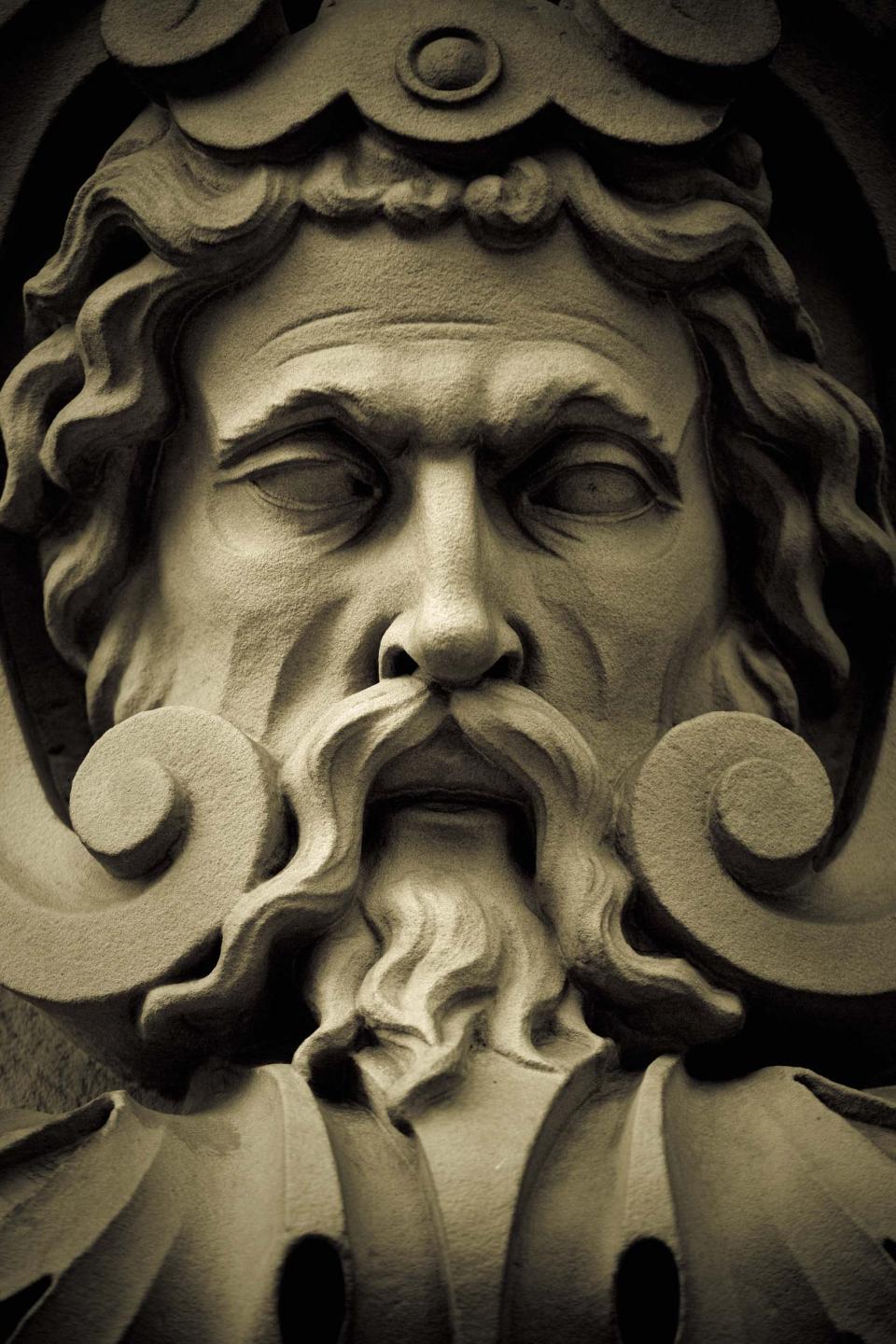
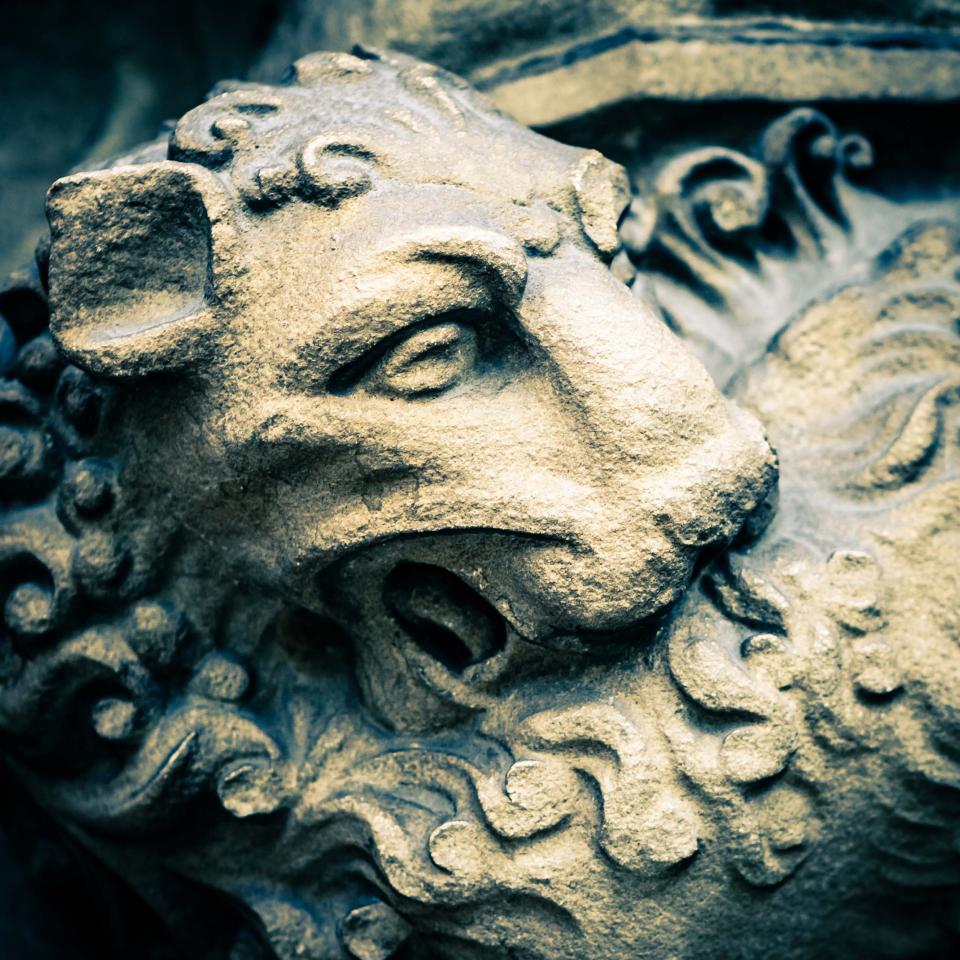
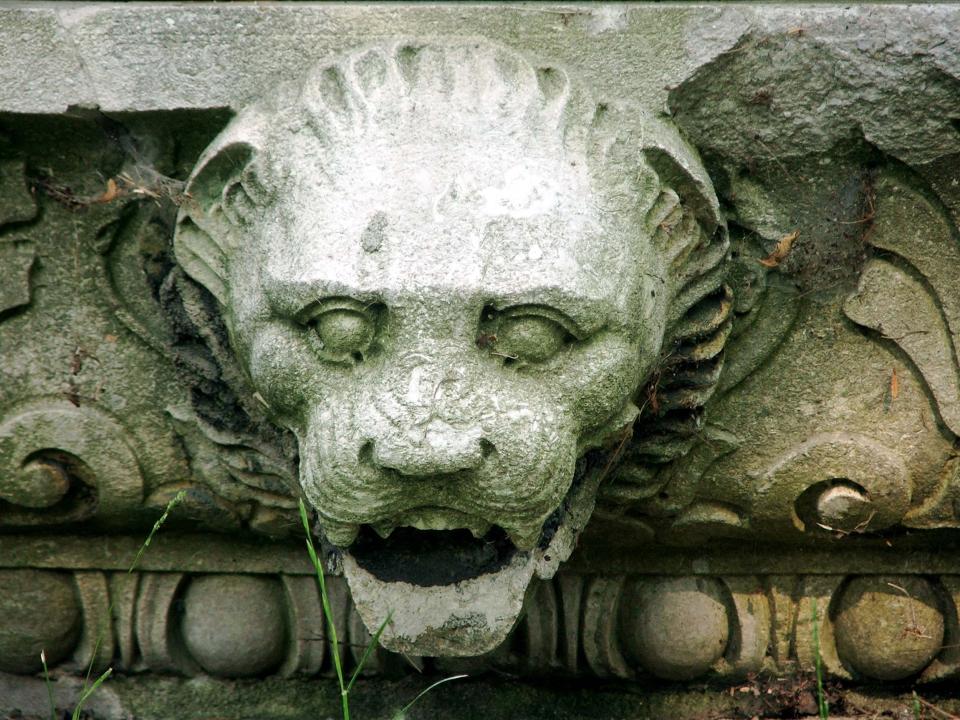
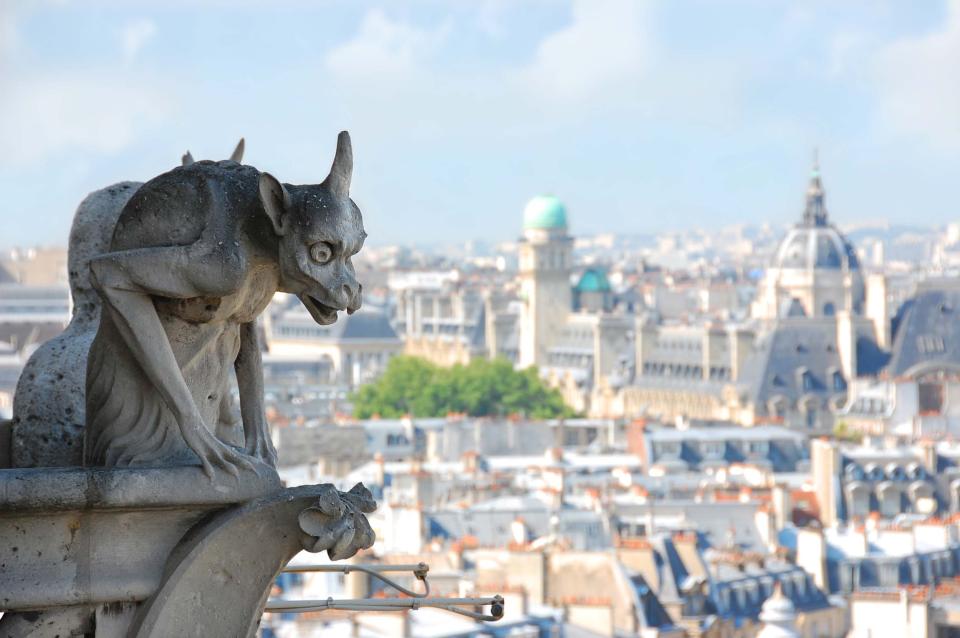
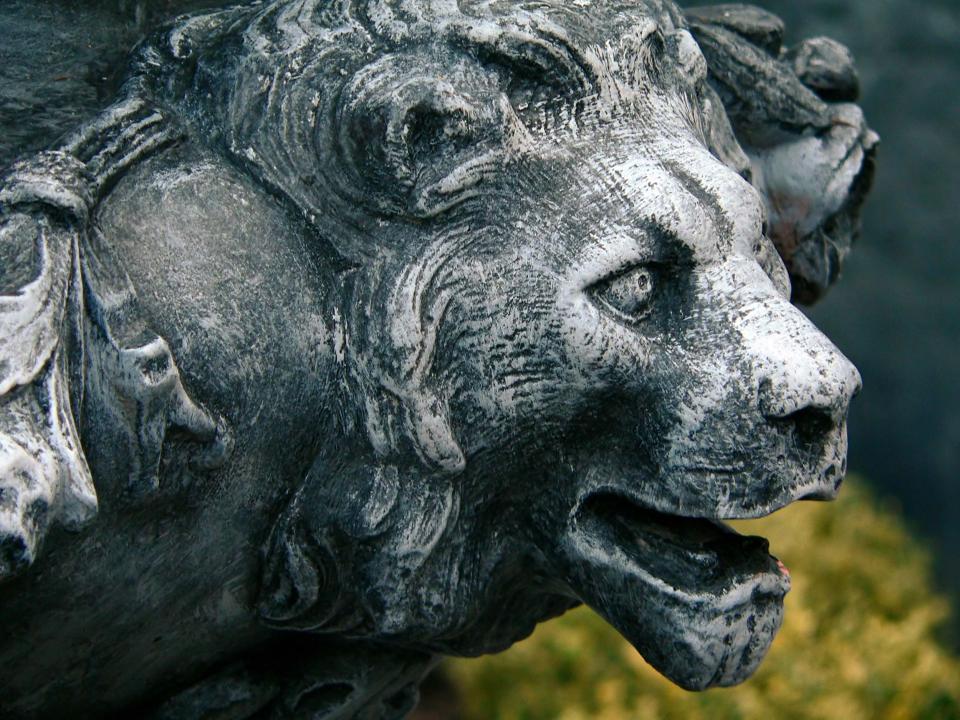
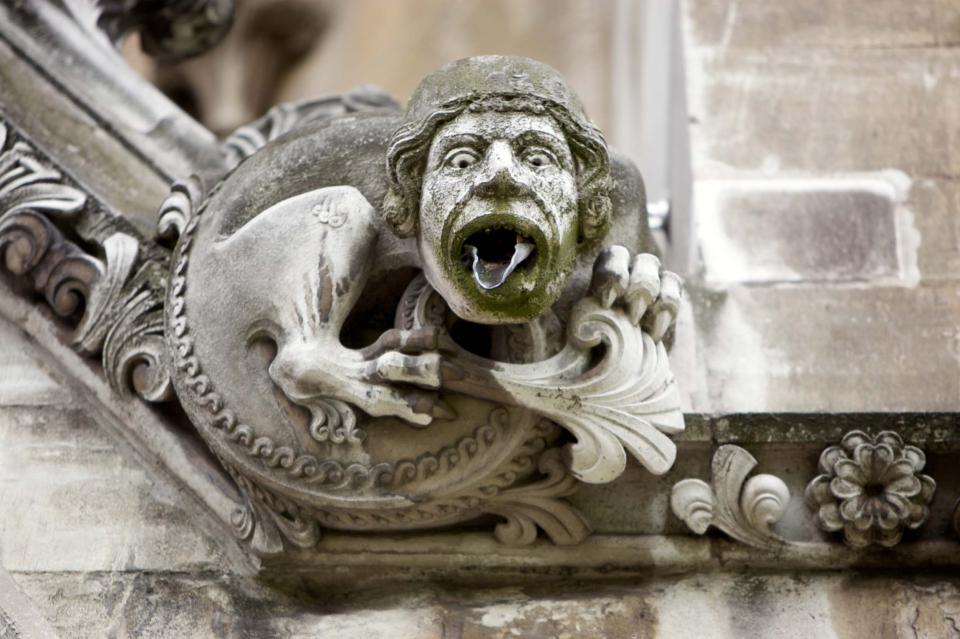
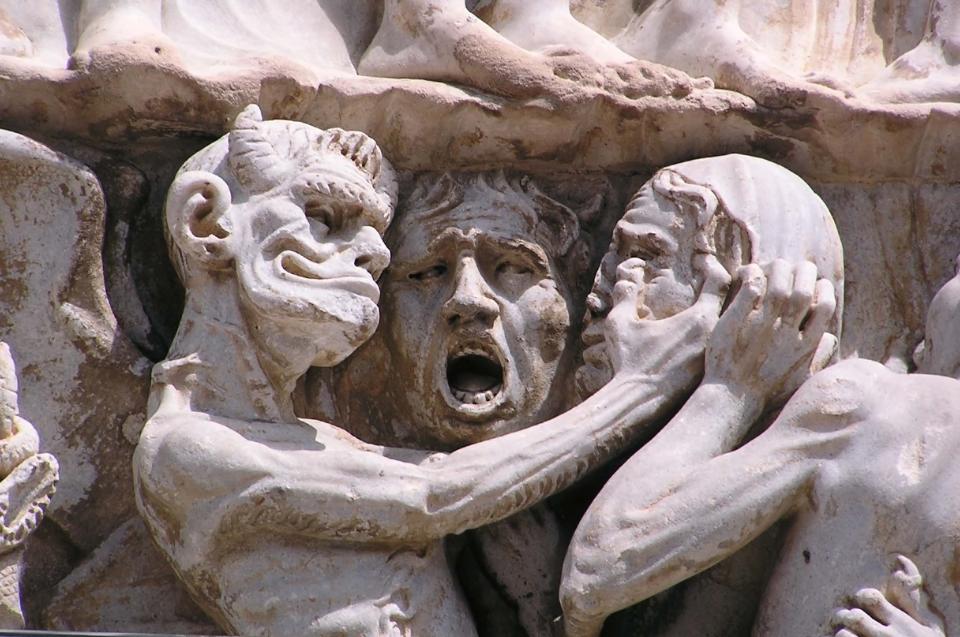
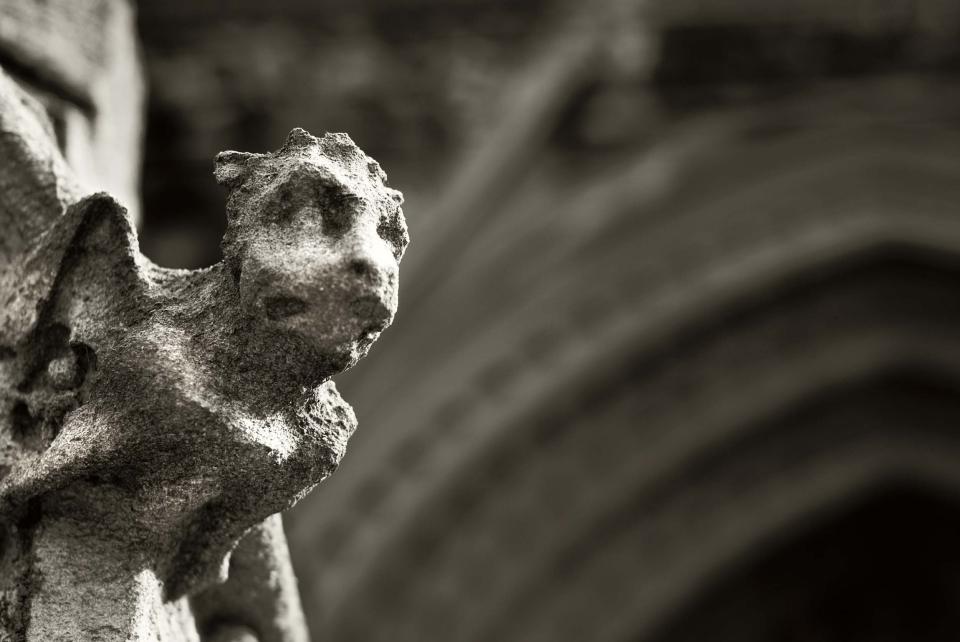
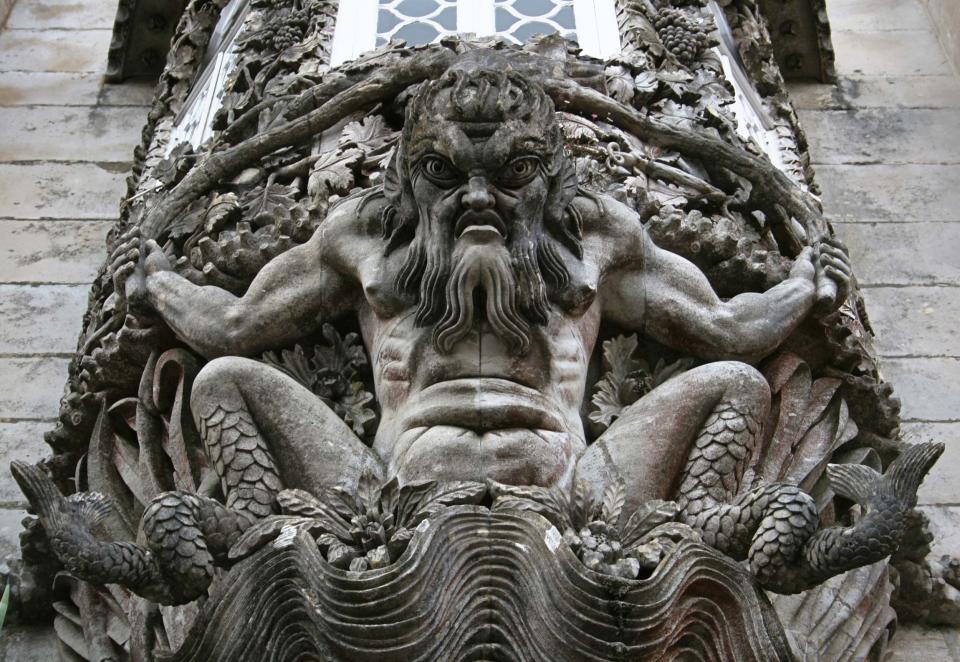
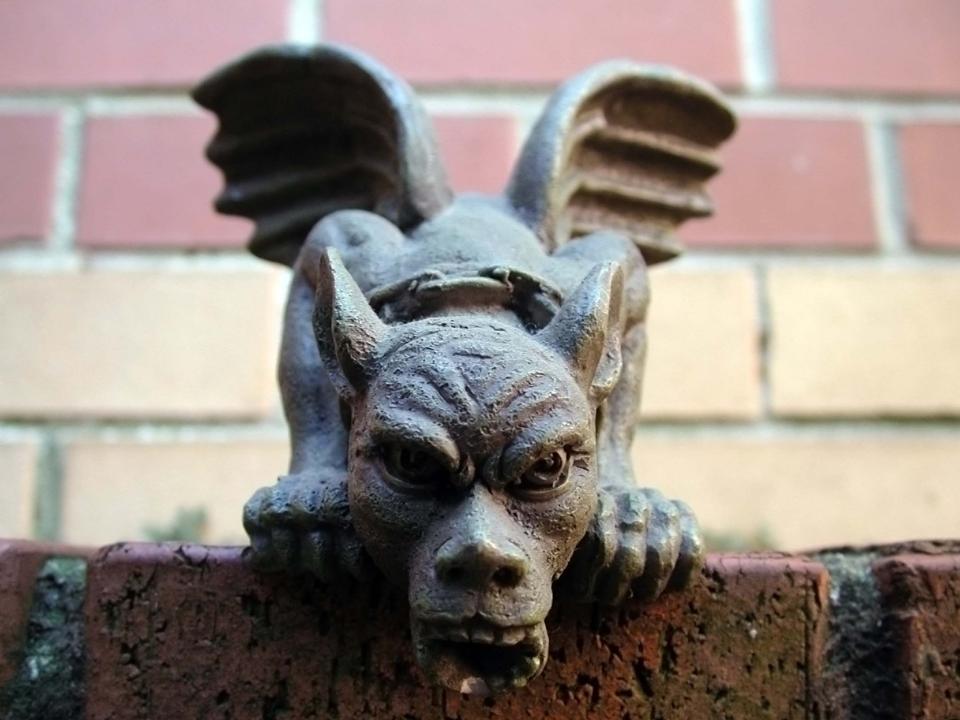
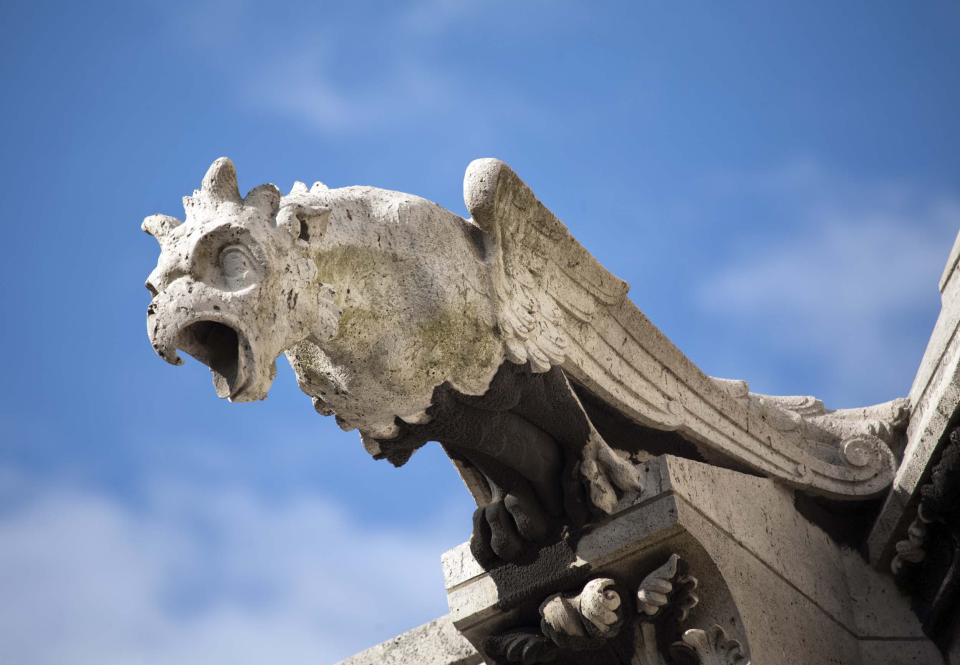
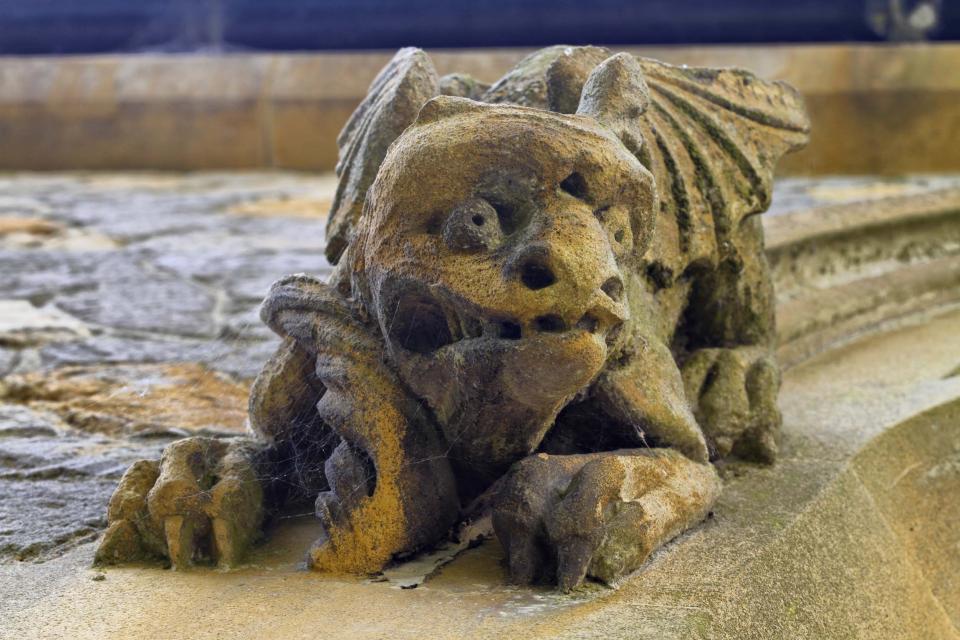

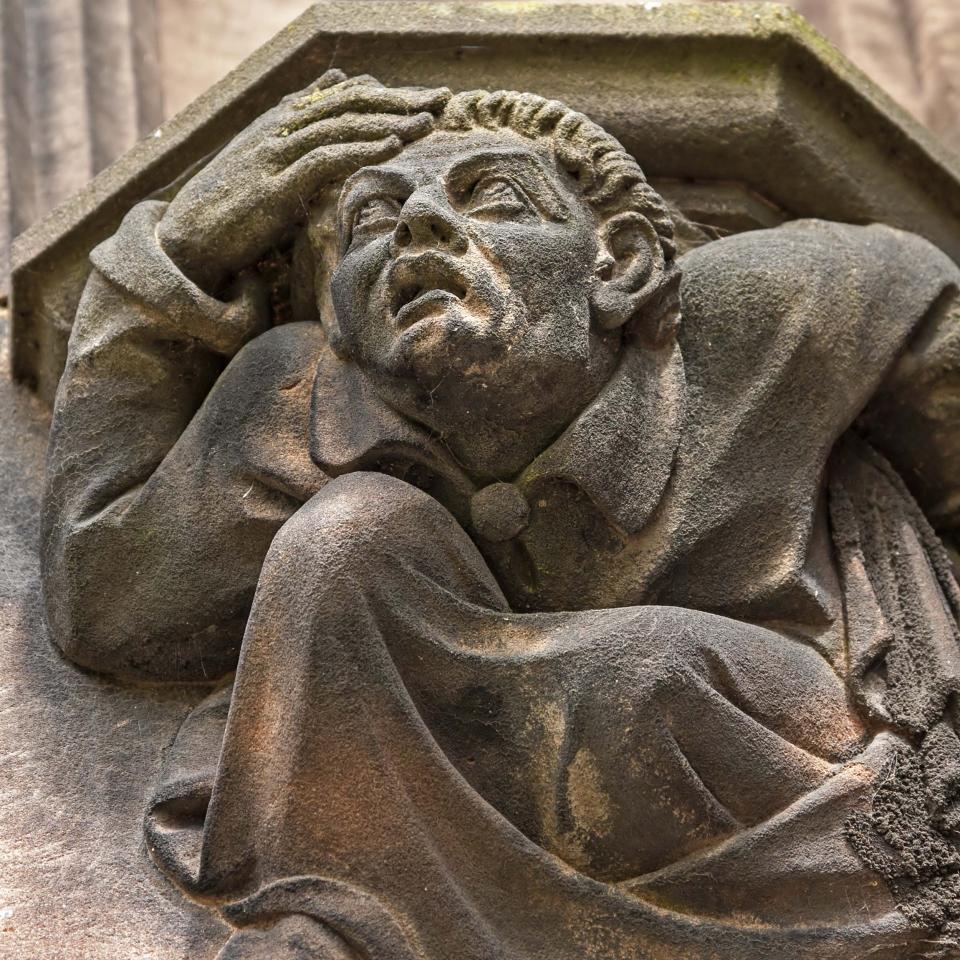
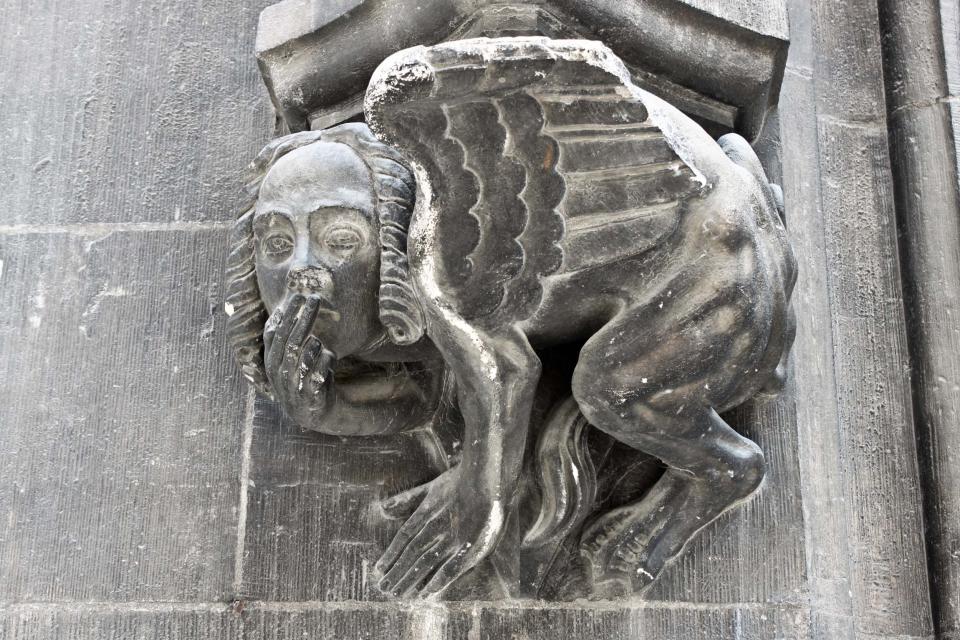
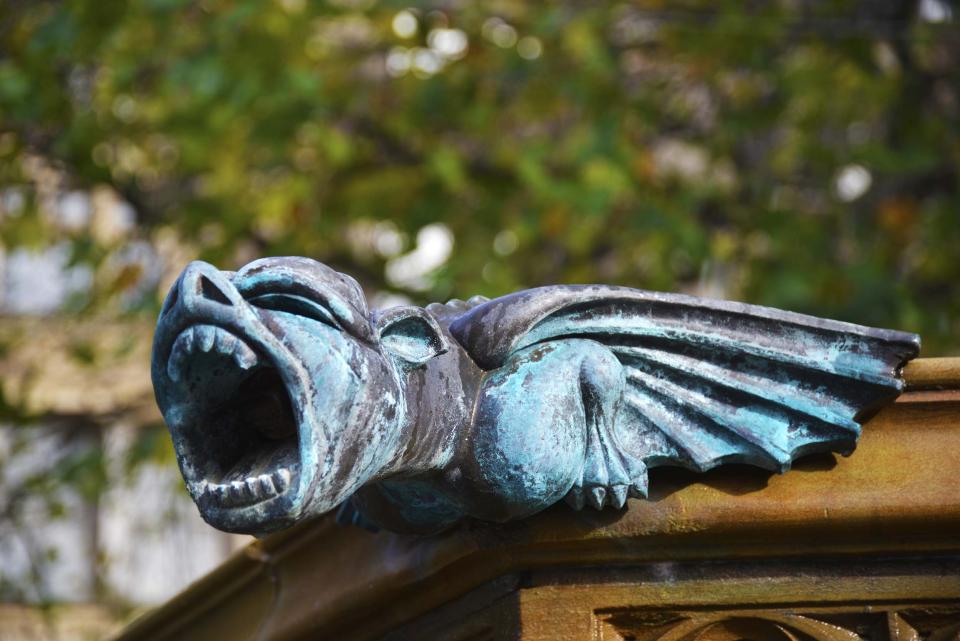
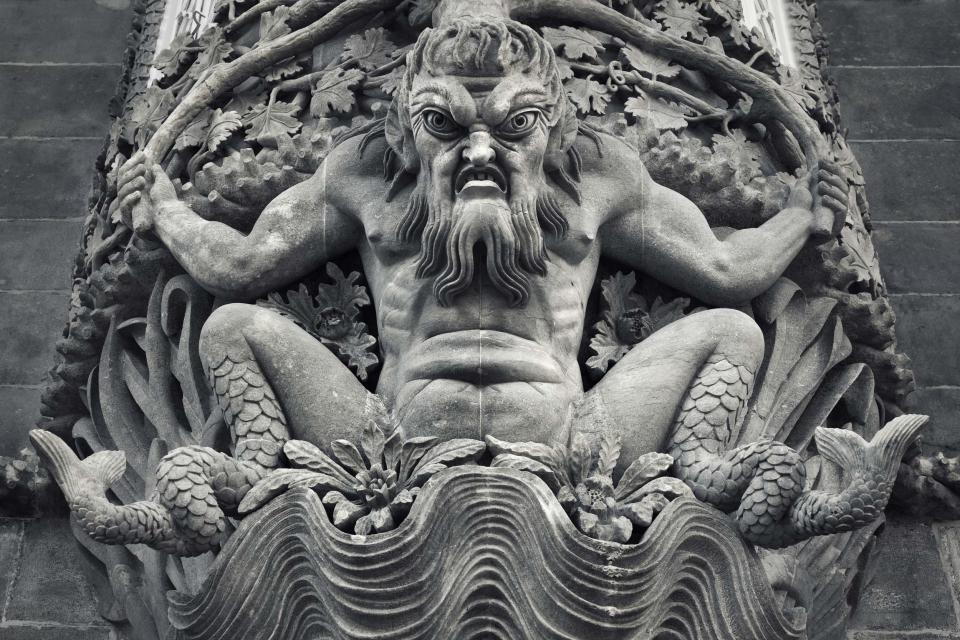
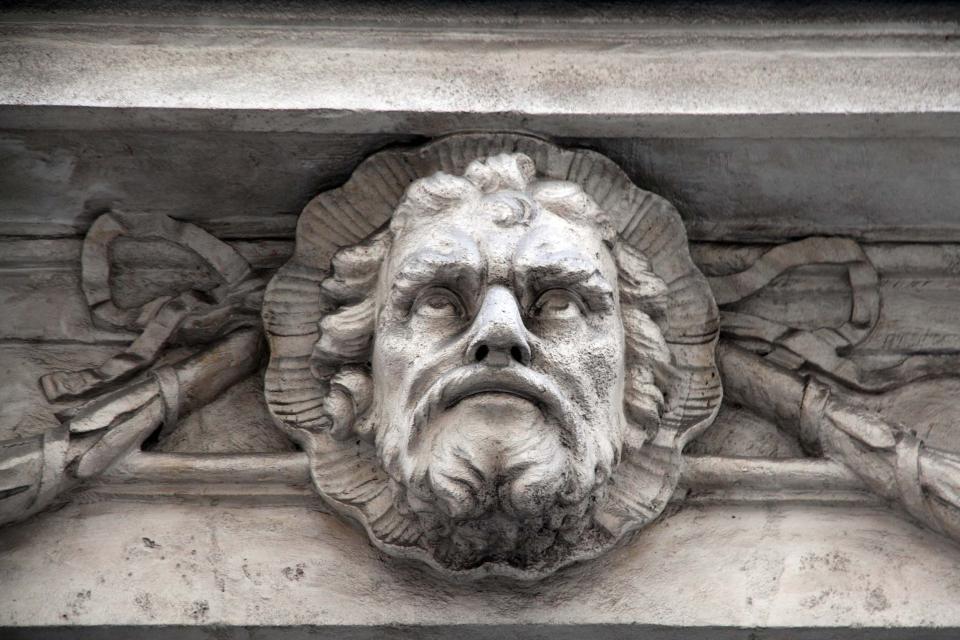

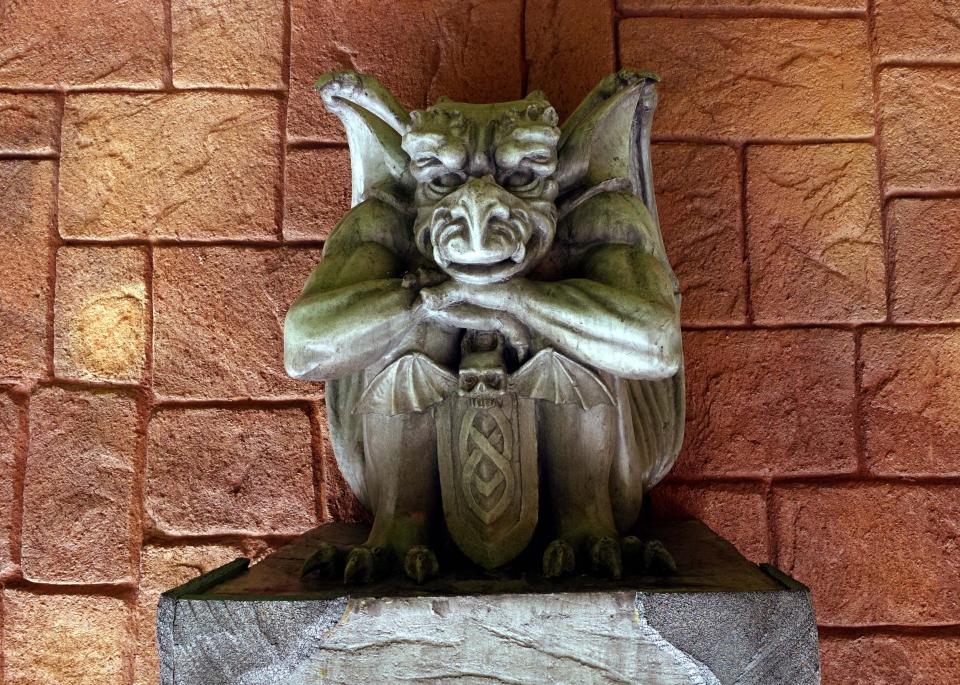
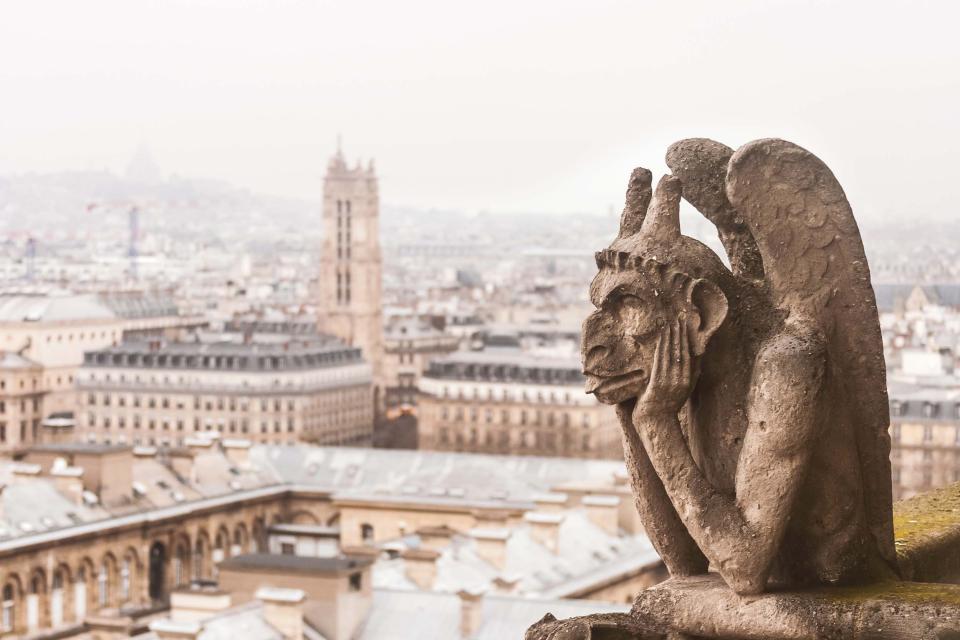
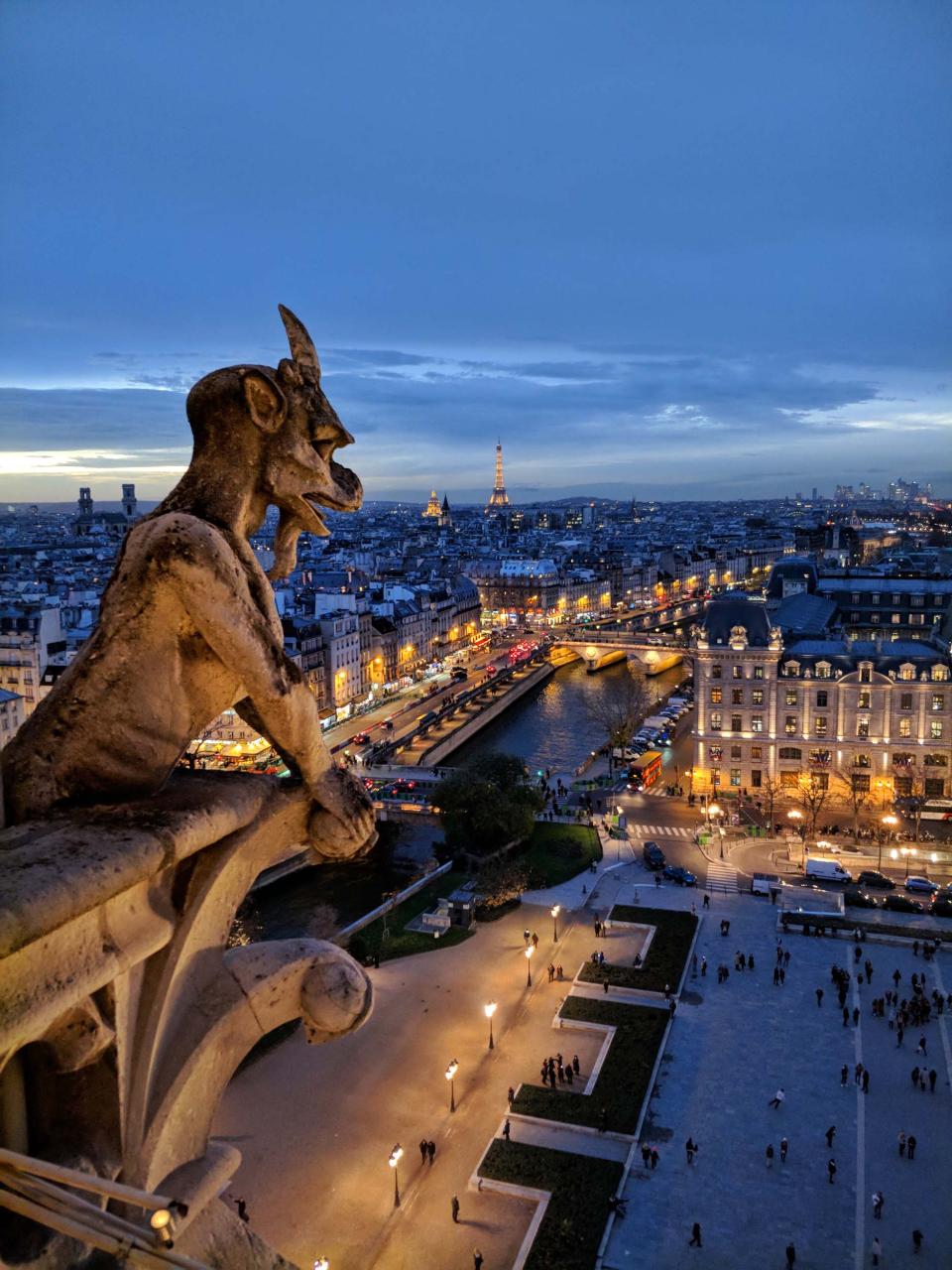
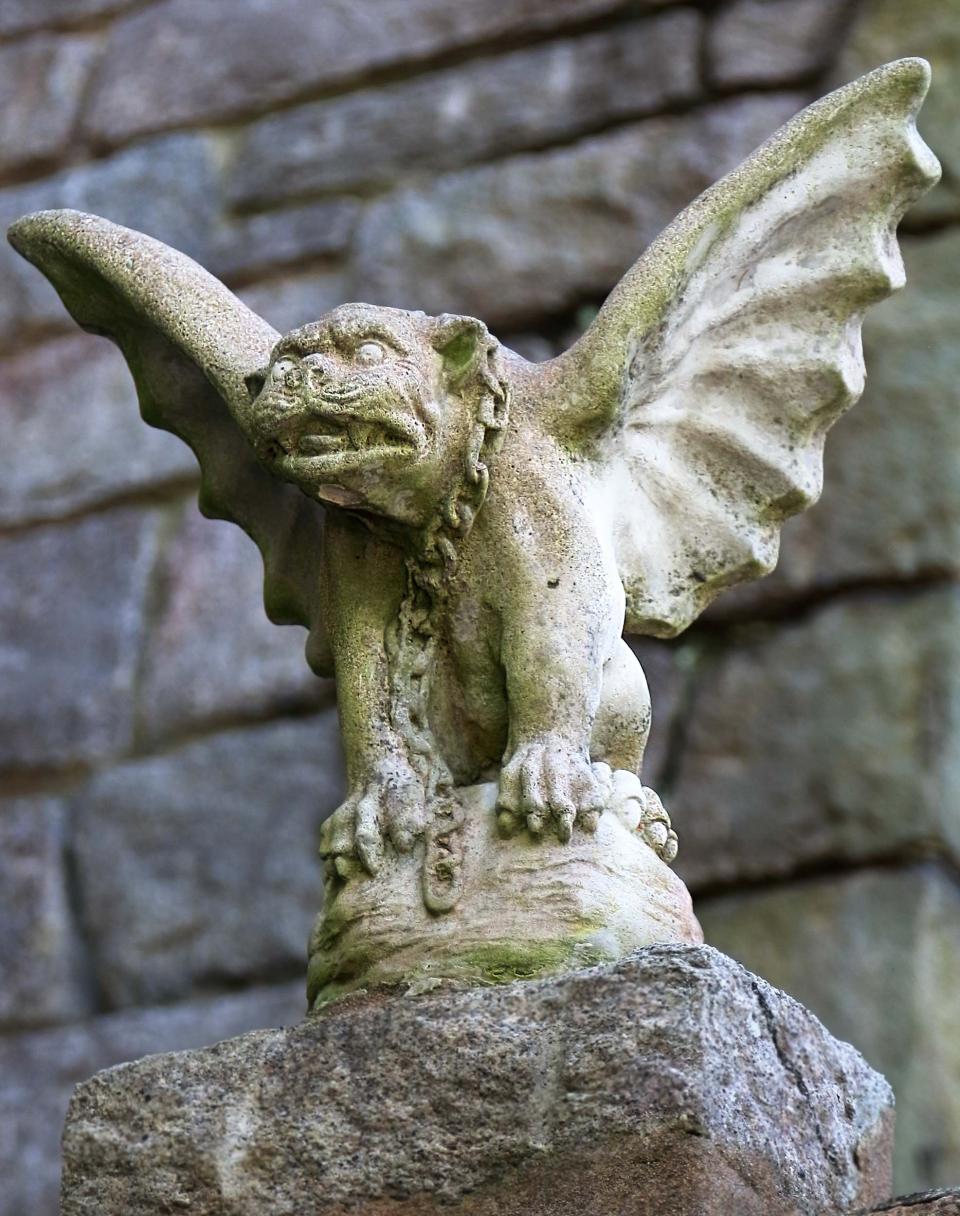




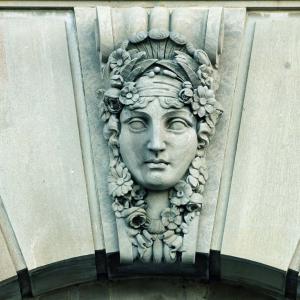


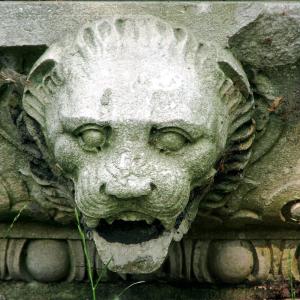
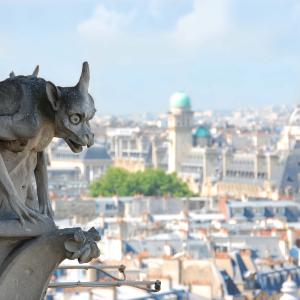
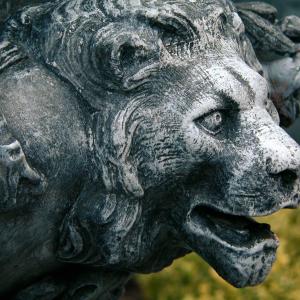
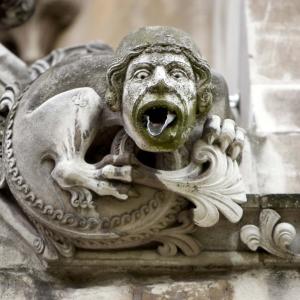
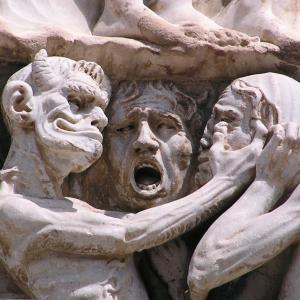
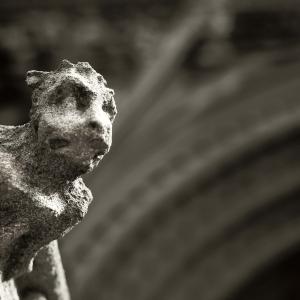
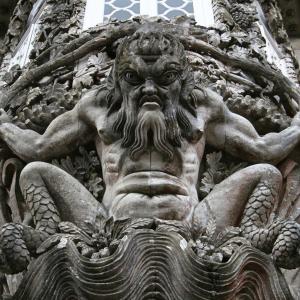
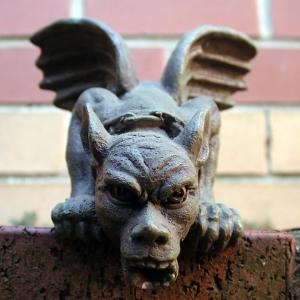

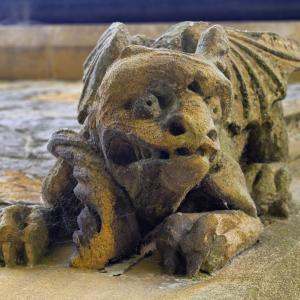


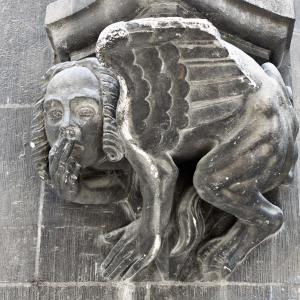
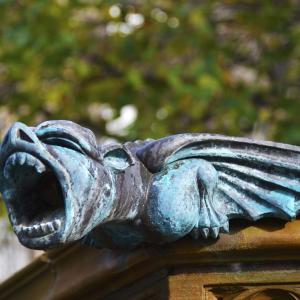
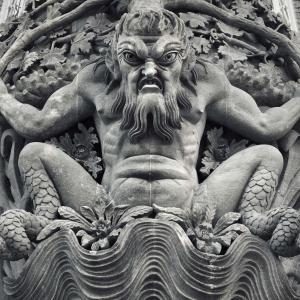
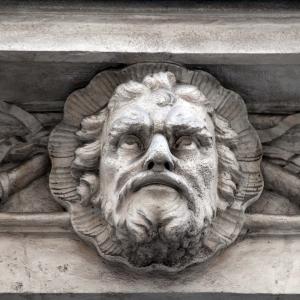


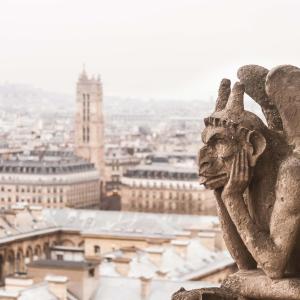


In architecture, a gargoyle is a carved or formed grotesque with a spout designed to convey water from a roof and away from the side of a building, thereby preventing rainwater from running down masonry walls and eroding the mortar between. Architects often used multiple gargoyles on a building to divide the flow of rainwater off the roof to minimize the potential damage from a rainstorm. A trough is cut in the back of the gargoyle and rainwater typically exits through the open mouth. Gargoyles are usually an elongated fantastical animal because the length of the gargoyle determines how far water is directed from the wall.
When Gothic flying buttresses were used, aqueducts were sometimes cut into the buttress to divert water over the aisle walls. The term originates from the French gargouille, which in English is likely to mean "throat" or is otherwise known as the "gullet"; cf. Latin gurgulio, gula, gargula ("gullet" or "throat") and similar words derived from the root gar, "to swallow", which represented the gurgling sound of water (e.g., Portuguese and Spanish garganta, "throat"; gárgola, "gargoyle"). It is also connected to the French verb gargariser, which shares a Latin root with the verb "gargle" and is likely imitative in origin.
The Italian word for gargoyle is doccione or gronda sporgente, an architecturally precise phrase which means "protruding gutter". (Italian also uses gargolla o garguglia, when it has a grotesque shape) When not constructed as a waterspout and only serving an ornamental or artistic function, the correct term for such a sculpture is a grotesque, chimera, or boss. There are also regional variations, such as the hunky punk. Just as with bosses and chimeras, gargoyles are said to protect what they guard, such as a church, from any evil or harmful spirits.
